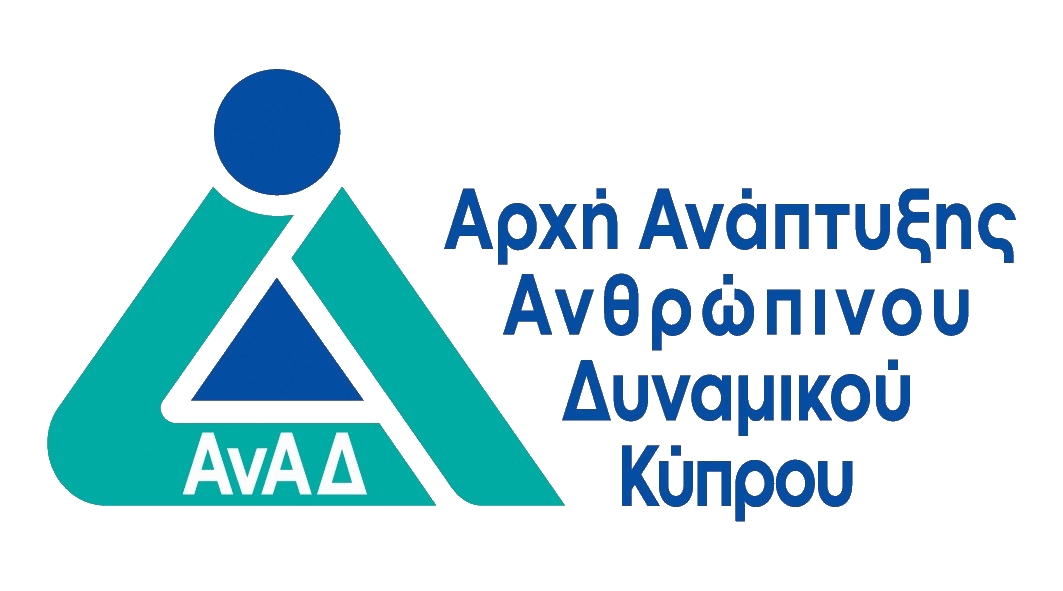
Microsoft 365 Endpoint Administrator (Course MD-102T00)
- Οργάνωση/ Διοίκηση/ Ηγεσία - Πληροφορική - Επαγγελματίες IT

ΠΕΡΙΓΡΑΦΗ
In this course, students will learn to plan and execute an endpoint deployment strategy using contemporary deployment techniques and implementing update strategies. The course introduces essential elements of modern management, co-management approaches, and Microsoft Intune integration. It covers app deployment, management of browser-based applications, and key security concepts such as authentication, identities, access, and compliance policies. Technologies like Azure Active Directory, Azure Information Protection, and Microsoft Defender for Endpoint are explored to protect devices and data.
ΣΚΟΠΟΣ ΣΕΜΙΝΑΡΙΟΥ
Upon completion of this course the participants will :
- Describe endpoint management and enterprise desktop lifecycle concepts
- Enlist Windows OS editions, features, and installation methods
- Describe the differences of Azure Premium P1 and P2
- Execute device enrollment
- Configure profiles for user and devices
- Manage authentication and compliance
- Manage endpoint security
- Deploy using on-premises based tools
- Deploy using cloud based tools
- Execute mobile application management
- Deploy and update applications
- Administer endpoint applications
- Adopt Microsoft Guidelines to plan and execute an endpoint deployment strategy
ΣΕ ΠΟΙΟΥΣ ΑΠΕΥΘΥΝΕΤΑΙ
This course is designed for persons who are IT Professionals, Microsoft 365 and Azure administrators, Support Staff and Technicians
Prerequisites
Before attending this course, students must have:
- Completed a role-based administrator course such as Messaging, Teamwork, Security and Compliance, or Collaboration.
- A proficient understanding of DNS and basic functional experience with Microsoft 365 services.
- A proficient understanding of general IT practices.
ΠΕΡΙΣΣΟΤΕΡΕΣ ΠΛΗΡΟΦΟΡΙΕΣ
Topics to be Covered
MODULE 1: Explore endpoint management
- Unit 1: Explore the Enterprise Desktop
This Unit covers modern endpoint management and enterprise desktop lifecycle concepts. It teaches the stages of the lifecycle (planning, deployment, maintenance)
and provides a foundation for future learning. - Unit 2: Explore Windows Editions
This Unit covers Windows OS editions, features, and installation methods. Learners gain a deeper understanding of the available editions and corresponding installation processes. - Unit 3: Understand Azure Active Directory
This Unit explains Azure AD. You'll compare Azure AD to AD DS, learn about Azure AD Premium P1 and P2, and explore Azure AD Domain Services for managing domain-joined devices and apps in the cloud. - Unit 4: Manage Azure Active Directory identities
This Unit teaches how to use Azure AD effectively. You'll learn about RBAC, user roles, creating and managing users and groups, using PowerShell cmdlets, and synchronizing objects from AD DS to Azure AD.
MODULE 2: Execute device enrollment
This module will cover Azure AD join and will introduce Microsoft Endpoint Manager. We'll also discuss how to configure policies for enrolling devices to Configuration Manager and Microsoft Intune.
- Unit 5: Manage device authentication
In this Unit, you learn about device authentication and management in Azure Active Directory - Unit 6: Enroll devices using Microsoft Configuration Manager
This Unit introduces students to client deployment options and some of the high-level management and monitoring options that are available using Configuration Manager. - Unit 7: Enroll devices using Microsoft Intune
Students will learn how to configure and setup Intune to more easily manage Windows, Android, and iOS devices.
Module 3: Configure profiles for user and devices
This module explores Intune device profiles, the benefits of user profiles and how to synchronize profile data across multiple devices.
- Unit 8: Execute device profiles
Students learn about the various types of device profiles, and how to create and manage them. - Unit 9: Oversee device profiles
This Unit introduces students to monitoring profiles to ensure correct assignments and resolving conflicts when multiple profiles are applied. - Unit 10: Maintain user profiles
Students learn about the benefits of various Windows user profiles, how to manage them, and how to facilitate profile data synchronization across multiple devices.
Module 4: Examine application management
Learners will examine application management methods using on-premises and cloud-based solutions.
- Unit 11: Execute mobile application management
This Unit introduces Mobile Application Management (MAM). Students will learn about considerations for implementing MAM and will be introduced to the management of MAM using Intune and Configuration Manager. - Unit 12: Deploy and update applications
In this Unit, you'll master deploying applications using Intune, Configuration Manager, Group Policy, and Microsoft Store Apps. These powerful tools and techniques will equip you to manage and maintain diverse applications across your organization effectively. - Unit 13: Administer endpoint applications
In this Unit, you're introduced to managing apps on Intune managed devices. The Unit will then conclude with an overview of how to use IE Mode with Microsoft Edge.
Module 5: Manage authentication and compliance
This learning path covers the various solutions for managing authentication. Students will also learn about the different types of VPNs, as well as compliance and conditional access policies.
- Unit 14: Protect identities in Active Directory Domain Services
This Unit introduces students to the various authentication methods used to protect identities. - Unit 15: Enable organizational access
This Unit describes how clients can be configured to access organizational resources using a virtual private network (VPN). - Unit 16: Implement device compliance
This Unit describes how to use compliance and conditional access policies to help protect access to organizational resources. - Unit 17: Generate inventory and compliance reports
This Unit describes how to use Microsoft Endpoint Manager and Power BI to create compliance and custom reports.
Module 6: Manage endpoint security
In this learning path, students will learn about data protection and protecting endpoints against threats. This path will also cover the key capabilities of Microsoft Defender solutions.
- Unit 18: Deploy device data protection
This Unit describes how you can use Intune to create and manage WIP policies that manage this protection. The Unit also covers implementing BitLocker and Encrypting File System. - Unit 19: Manage Microsoft Defender for Endpoint
This Unit explores using Microsoft Defender for Endpoint to provide additional protection and monitor devices against threats. - Unit 20: Manage Microsoft Defender in Windows client
This Unit explains the built-in security features of Windows clients and how to implement them using policies. - Unit 21: Manage Microsoft Defender for Cloud Apps
This Unit covers Microsoft Defender for Cloud Apps, focusing on securing sensitive data, its relevance in dynamic work settings, and effective utilization for improved security posture.
Module 7: Deploy using on-premises based tools
Students are introduced to deployment using the Microsoft Deployment Toolkit and Configuration Manager.
- Unit 22: Assess deployment readiness
Discusses some of the tools that you can use to perform detailed assessments of existing deployments, and describes some of the challenges that you may face. - Unit 23: Deploy using the Microsoft Deployment Toolkit
Discusses the shifts from traditional to modern management and where on-premises solutions best fit in today’s enterprise. - Unit 24: Deploy using Microsoft Configuration Manager
This Unit explains the common day to day tasks that Administrators would use Configuration Manager to perform.
Module 8: Deploy using cloud based tools
Students will learn about using Windows Autopilot and deployment using Microsoft Intune. Students will also learn how co-management can be used to transition to modern management.
- Unit 25: Deploy Devices using Windows Autopilot
Use Autopilot to deploy new hardware or refreshing an existing hardware with the organization’s desired configuration, without using the traditional imaging process. - Unit 26: Implement dynamic deployment methods
Use dynamic provisioning methods such as Subscription Activation, Provisioning packages, and Azure AD join to reconfigure an existing operating system. - Unit 27: Plan a transition to modern endpoint management
Explore considerations and review the planning of transitioning to modern management, focusing on migration and newly provisioned devices. - Unit 28: Manage Windows 365
This Unit teaches managing Microsoft's cloud-based PC management solution, Windows 365, offering personalized, secure Windows 11 experience from any device.
Αναλυτικό Κόστος Σεμιναρίου
Για Δικαιούχους ΑνΑΔ
- € 1050.00
- € 700.00
- € 0.00
- € 350.00
- € 350.00
Για μη-Δικαιούχους ΑνΑΔ
- € 1050.00
- € 0.00
- € 0.00
- € 1050.00
- € 1,050.00
ΠΡΟΓΡΑΜΜΑ ΣΕΜΙΝΑΡΙΟΥ
Πέμπτη - 21 Μαρτίου 2024
Ώρα
08:15 - 16:00
Τοποθεσία:
OnLine Virtual Classroom
Παρασκευή - 22 Μαρτίου 2024
Ώρα
08:15 - 16:00
Τοποθεσία:
OnLine Virtual Classroom
Σάββατο - 23 Μαρτίου 2024
Ώρα
08:15 - 16:00
Τοποθεσία:
OnLine Virtual Classroom
Πέμπτη - 28 Μαρτίου 2024
Ώρα
08:15 - 16:00
Τοποθεσία:
OnLine Virtual Classroom
Παρασκευή - 29 Μαρτίου 2024
Ώρα
08:15 - 16:00
Τοποθεσία:
OnLine Virtual Classroom
 Ελληνικά
Ελληνικά  English
English



 Ελληνικά
Ελληνικά
 35 ώρες
(
5 μέρες
)
35 ώρες
(
5 μέρες
)







